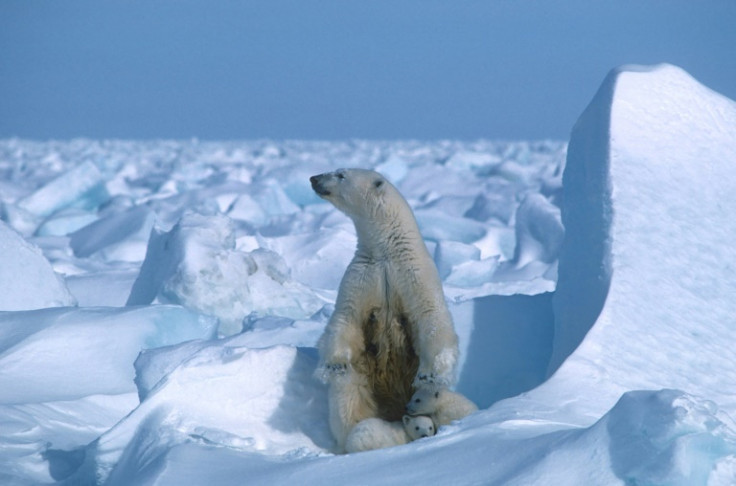First Case Of Polar Bear Death Due To Bird Flu Confirmed In Alaska
The experts fear that more polar bears may have fallen prey to the disease.

A polar bear in one of the northernmost communities in Alaska has died after contracting bird flu, per local media reports.
The case is being described as the first such polar bear death caused by the H5N1 virus, according to the Alaska Department of Environmental Conservation. The bear was found near Utqiagvik in October of last year, but its death due to bird flu was confirmed in December.
The virus was first detected in the Arctic region in April 2023 among birds and a fox. A few months later, the strain was also found in a flock of chickens and ducks in the Matanuska-Susitna Borough, per a report in Down To Earth.
The bear is suspected to have contracted the virus while feeding on infected birds. "While polar bears normally eat seals which they hunt from the sea ice, it appears likely that this bear was scavenging on dead birds and ingested the influenza virus that way," the publication quoted a veterinarian from Alaska as saying.
The experts fear that more polar bears may have fallen prey to the disease. The development has experts worried since the virus could pose a threat to penguins and other local species.
Polar bears are endemic to the region. They are listed as "vulnerable" in the International Union for Conservation of Nature (IUCN) Red List of Endangered Species.
In October, avian flu, also called bird flu, was also detected in Antarctica for the first time. The strain was detected in a bird called brown skua on Bird Island in South Georgia by the staff of the British Antarctic Survey (BAS) on Monday. The island is a British overseas territory.
Researchers believe that the virus was most likely brought by birds returning from their migration to South America, as the region has seen a significant number of deaths due to bird flu recently.
The virus is estimated to have killed millions of wild birds. It has affected other species as well, such as bald eagles, foxes, and kittiwakes.
Scientists have warned that the virus could bring "one of the largest ecological disasters of modern times" if it starts to spread amongst penguin colonies.
Last year, the spread of bird flu forced one of England's most important seabird colonies to close to visitors. The Farne Islands off the Northumberland coast, home to around 200,000 birds, were affected by a lethal outbreak of avian influenza that had spread from the UK's domestic population.
What is the Avian Flu?
Avian flu is one of the hundreds of deadly diseases transferred between animals and humans. Most avian influenza viruses do not infect humans; however, certain strains are infectious to humans. These include H5N1, H7N3, H7N7, H7N9, and H9N2.
The most common type is the avian influenza sub-type H5N1 virus. Bird flu can infect humans who come into contact with an infected bird. However, it happens only in rare cases.
It typically requires very close contact between humans and infected birds. In 2021, H5N8—the most recent avian flu of concern—was found to have infected a small number of people for the first time in Russia.
Other threats to Polar Bears:
According to the World Wildlife Fund (WWF), polar bears are at the top of the food chain and play an extremely important role in maintaining the health of the marine environment. Polar bears rely on sea ice for almost all aspects of life, but sea ice in the Arctic is diminishing rapidly due to climate change.
The melting of sea ice sometimes pushes the creature to go looking for food in areas where humans live.
A study in 2016 claimed that the polar bear population is set to decline by at least a third by the year 2050. The study supports the IUCN Red List's classification of polar bears as a vulnerable species that has a high risk of going extinct in the wild.
Polar bears could be extinct in the next 100 years if actions are not taken to reverse climate change and global warming.
© Copyright IBTimes 2024. All rights reserved.






